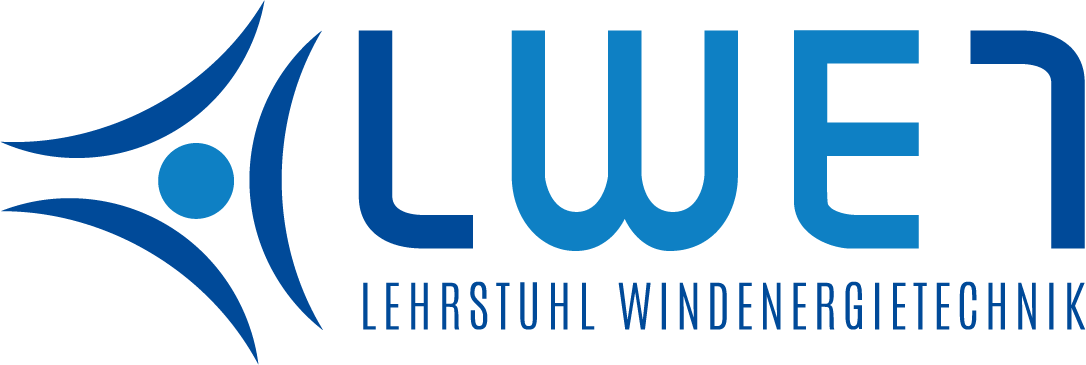Highly-specialised simulation tools are used today to ensure a secure and optimised design of modern wind turbines. Yet, these programmes are still subject to constant further development and improvements in accordance with the latest scientific findings. Verification and validation are integral parts of this process. Here, verification describes the comparison of simulation results of different simulation tools with each other, whereas validation is the comparison of simulation results against empirical, measured data.
To support the verification and validation of modern aero-elastic codes, since 2016 the Chair of Wind Energy Technology is member of the international Offshore Code Comparison Collaboration. In this context, the Chair of Wind Energy Technology participated in the OC5 project with its in-house code SiWEC. Additionally, the Chair of Wind Energy Technology is also active participant in the subsequent OC6 project. The OCx projects are each consisting of multiple phases and are running under the International Energy Agency (IEA) Wind Tasks.
If you have any questions about this project, please do not hesitate to contact Paul Schünemann.
In the Offshore Code Comparison Collaboration Continuation, with Correlation (OC5) project, in addition to the University of Rostock, further 28 partner organisations from 12 different countries have collaborated. The main objectives of OC5 were:
- To assess the precision and reliability of simulation results
- The identification and validation of the potential and limitations of the simulation programmes
- Conducting further research into and refining analytical approaches
- The identification of future research and development problems in the field of aero-elastic codes
OC5 consisted of three phases, with the Chair of Wind Energy Technology joining the project at the beginning of phase III. In this phase empirical data from a wind turbine installed in the North Sea were being used for validation purposes. The wind turbine in question was a 5MW system of the REpower 5M type, which is installed in Germany’s first offshore wind farm - Alpha Ventus - on a jacket-type tower manufactured by OWEC Tower. As part of the RAVE-Initiative (Research at Alpha Ventus), this wind turbine was fitted with a plethora of sensors prior to installation, which supply the OC5 project with a wealth of empirical data relating loads, deformations and acceleration forces at various points throughout the structure. Phase III of the project run from January 2017 to January 2019.
We would like to offer our heartfelt thanks to Senvion S.A. and OWEC Towers AS for providing the data needed to model the system under study in the simulation tools, as well as to NREL and IWES for organising and coordinating the OC5 project.
The Offshore Code Comparison Collaboration, Continued, with Correlation and unCertainty (OC6) is an international research project with more than 15 partners, including the Chair of Wind Energy Technology. The OC6 project is performed over four years (2019-2023) and consists of four phases with different focuses:
Phase I: Validate the nonlinear hydrodynamic loading on floating offshore wind support structures (including additional data from a component-level validation campaign geared towards CFD validation)
Phase II: Develop and verify an advanced soil/structure interaction model for representing the pile/foundation interaction
Phase III: Validate the aerodynamic loading on a wind turbine rotor undergoing large motion caused by a floating support structure
Phase IV: Benchmark and validate methods for combining potential flow and viscous hydrodynamic load models for novel floating offshore wind support structures
More information and results can be found on the website of IEA Wind and at: https://a2e.energy.gov/projects/oc6



